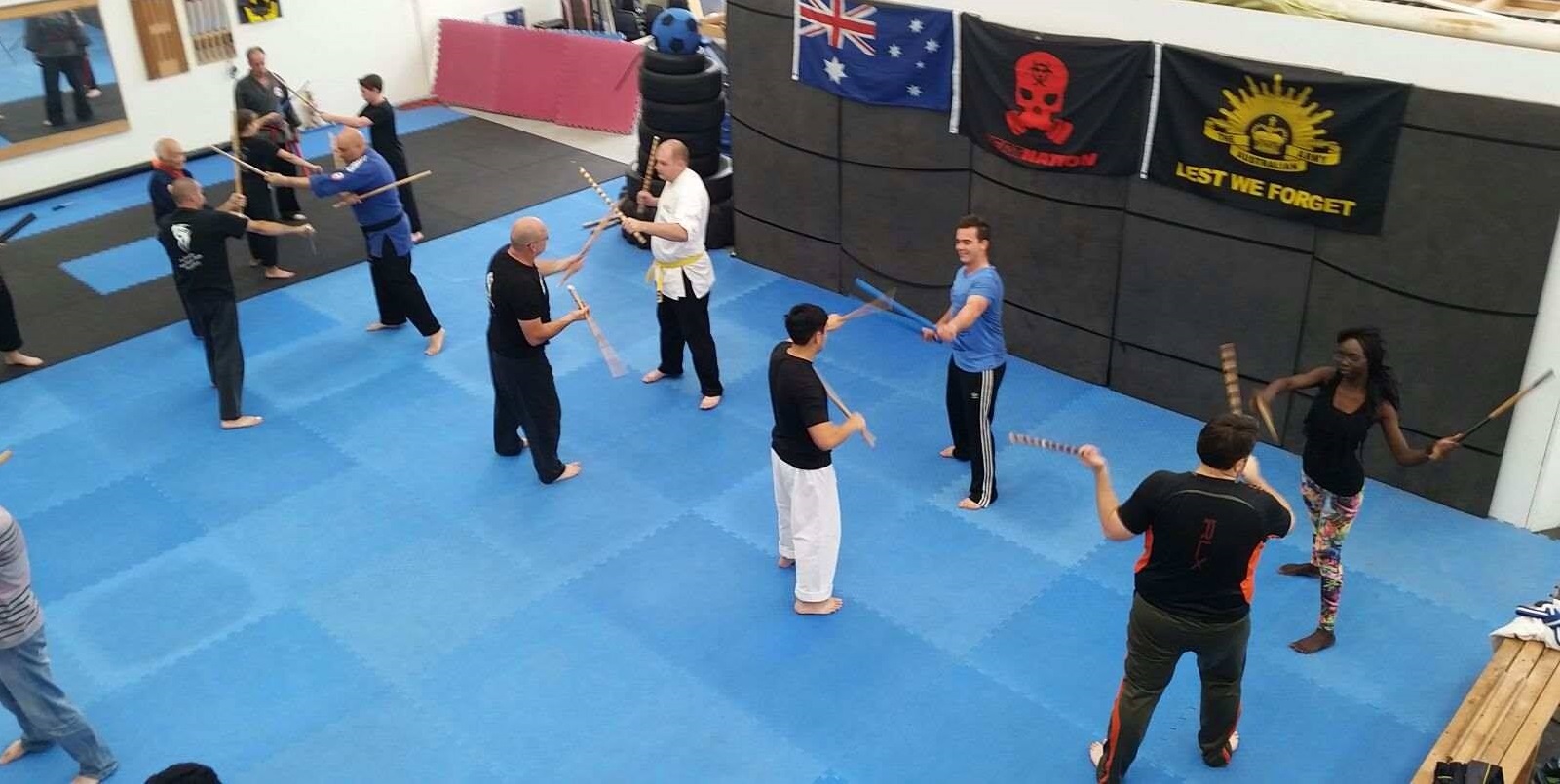
The traditional system of rank used in modern martial arts descended from Japan is known as the kyu-dan system. Kano Jigoro developed it for judo, with two categories, colored belts, and black belts. Colored belts are numbered, top-down, and labeled, “kyu”. Black belt ranks are numbered bottom-up, and referred to as “dan”. According to Dave Lowry, kyu means thread (as in, sewn together), and dan means “step”. Before this, there was a classical system of certificates in older Japanese martial arts, known as the “mokuroku” system. The word means “catalog”, and each certificate was a catalog of the techniques the holder had learned. A typical version of the mokuroku system had five ranks:
- Oku Iri, meaning, “entrance to the secrets”; this classifies the holder as an official student of the system
- Mokuroku (‘catalog’); in this case, the holder is officially classed as a practitioner of the art, and included in the catalog of practitioners
- Menkyo, meaning “license”; this is a licensed teacher of the system
- Kaiden, meaning “everything passed”; a master of the system
- Soke: headmaster of the system
My arnis instructor, Randy Gelo, told me that he’s always given first degree black belt as probationary, and for a period of twelve months. I think this is a very good idea, in particular because many folks achieve their goal of black belt, and walk away. Therefore, first degree (first dan, aka shodan) is a signal to other practitioners that the holder is either recently promoted, or never went back.
My aikido teacher, Ben Duggar, had a particular interpretation of the dan system. He felt Shodan (first dan) made you an official student, nidan (second dan) was full practitioner, yondan (fourth dan) was a licensed teacher, and rokudan (sixth dan) was a full master. Degrees of dan rank above this were entirely political. For example, the system’s head instructor would be eighth dan, and the president of the association ninth dan. This begins to get at the idea that larger organizations have different needs from smaller organizations. In particular, you’ll need assistants for instructors, head instructors, and a vice-president as well. I also believe quite strongly that tenth dan is reserved for the founder of the system, and posthumously, at that. If you are dealing with a larger organization, I think it dan ranks would look like this:
- Probationary
- Member
- Assistant instructor
- Full instructor
- Master instructor
- Vice president
- Assistant head instructor
- Head instructor
- President
- Founder (posthumous)
All that said, most martial arts these days are small. Excluding brazilian jiujitsu, traditional arts in this day and age are unlikely to need ten degrees of black belt. A certificate, or level system, makes more sense when practitioners can be measured in the tens, not hundreds or thousands. Another aspect of this is the belts themselves. Kano included three belts within the dan ranks. A regular black belt was worn first through fifth dan, a belt with alternating red and white panels (known as a kohaku obi) for sixth through eighth dan, and a red belt for ninth and tenth dan. Similar to organization size, in a large class, a kohaku obi allows you to see at a glance who is running things. In the brazilian jiujitsu world, kohaku obi are known as “coral belts”, and include black and red panels, as well as the traditional white and red.
At this point in history, many different combinations of coral belts have been used in a great many martial arts. One example is black and gold panels on the edging of the belt, with red in the middle. Another is gold edging on black and red panels. Plainly said, many of these look ridiculous, and don’t actually indicate higher skill or teaching ability. Classical Japanese martial arts expert Toby Threadgill once said that rank is simply an indication of who is safe to train which techniques, and who is qualified to teach. At the heart of the matter, this is absolutely correct.
Americans in general, and on the internet in particular, struggle with nuance. Depending on the size of the organization, some expansion of rank is useful in administration, but doesn’t indicate higher skill. Likewise, changes to the belt itself in the dan ranks can be useful to indicate teaching qualifications, and to assist in the running of a large class. Additionally, tenure in the dan ranks can often be measured in decades; it is also not unreasonable to want recognition of that dedication. One approach to this for licensed teachers and masters is a belt that is red on one side, and black on the other. The licensed teacher wears the black side out, and the full master, red side out. This way, there is recognition, and also simplicity. The head master of the system would then wear a full red belt.

